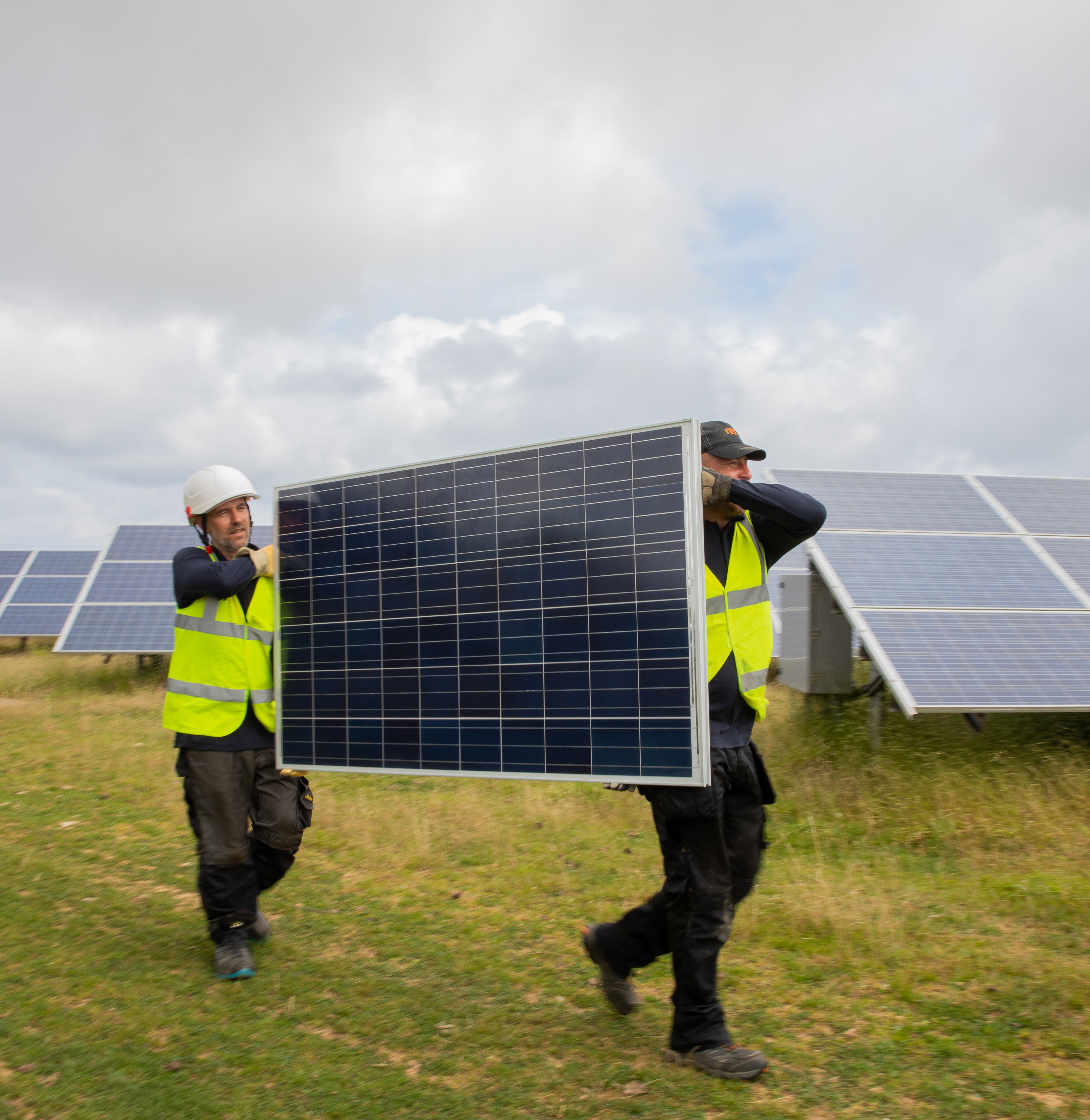
We have developed a solar project that will:
- Fight climate change (which is a long-term threat to the countryside)
- Improve energy security
- Provide local economic benefits
- Integrate into the local landscape
- Enhance local biodiversity
It is anticipated that the solar farm will be capable of generating up to 49.9 MW of clean, low cost renewable electricity. This is enough to power approximately 22,9451 homes, saving up to 32,1542 tonnes a year of CO2 compared to electricity from fossil fuels like gas.
Community engagment and consultation
In July 2023 we consulted key stakeholders and the public on our initial design for our proposed Chimmens Solar Farm. This included a meeting with parish councils on 28th June 2023 and a public exhibition on 10th July 2023 at Fawkham Parish Hall, enabling people to learn more about the project, discuss the proposal with our project team, provide us with feedback on the preliminary design.
You can read more about our consultation activities in our Statement of Community Involvement found here.
Why solar?
- Renewable energy at lowest cost to the consumer1
- Specifically designed to be dual purpose, combining continued agricultural use and renewable generation
- Quick to deploy
- Modern, efficient technology allowing more electricity generation in less space
- Diversification of agricultural business
- Significant biodiversity enhancement opportunities by supporting new and existing plant and animal habitats
- High level of public support2

1 RES has changed the formula for the homes powered and therefore the homes figure is now calculated by taking the predicted annual electricity generation of the site (using an average capacity factor of 11.2%) and dividing this by the annual average electricity figures from DESNZ (Department for Energy Security and Net Zero, formerly BEIS) showing that the annual GB average domestic household consumption is 3,239 kWh (January 24). Note, the change in formula has led to a difference in homes powered to that previously publicised.
2 RES now uses DESNZ’s “all non-renewable fuels” emissions statistic of 424 tonnes of carbon dioxide per GWh of electricity supplied in the Digest of UK Energy Statistics (July 2023) Table 5.14 (“Estimated carbon dioxide emissions from electricity supplied”) to calculate carbon reduction. Carbon reduction is calculated by multiplying the total amount of electricity generated by the solar farm per year by the number of tonnes of carbon which fossil fuels would have produced to generate the same amount of electricity. Note, the change in source has led to a difference in carbon offset to that previously publicised.
3 https://assets.publishing.service.gov.uk/media/6556027d046ed400148b99fe/electricity-generation-costs-2023.pdf
4 https://solarenergyuk.org/wp-content/uploads/2022/01/Copper-Consultancy_Solar-Energy-UK_Public-attitudes-to-solar_January-2022.pdf
